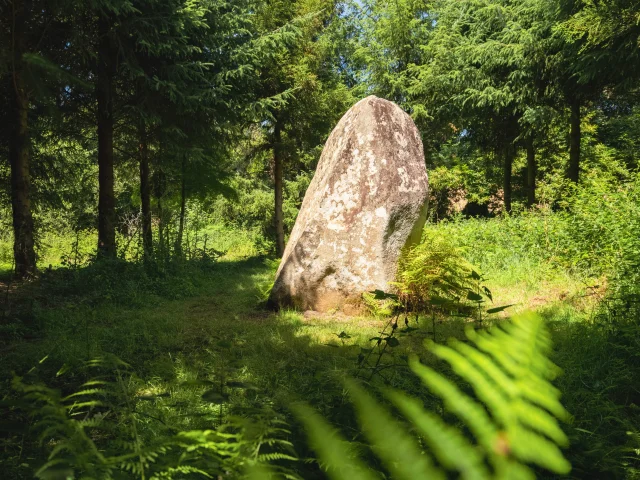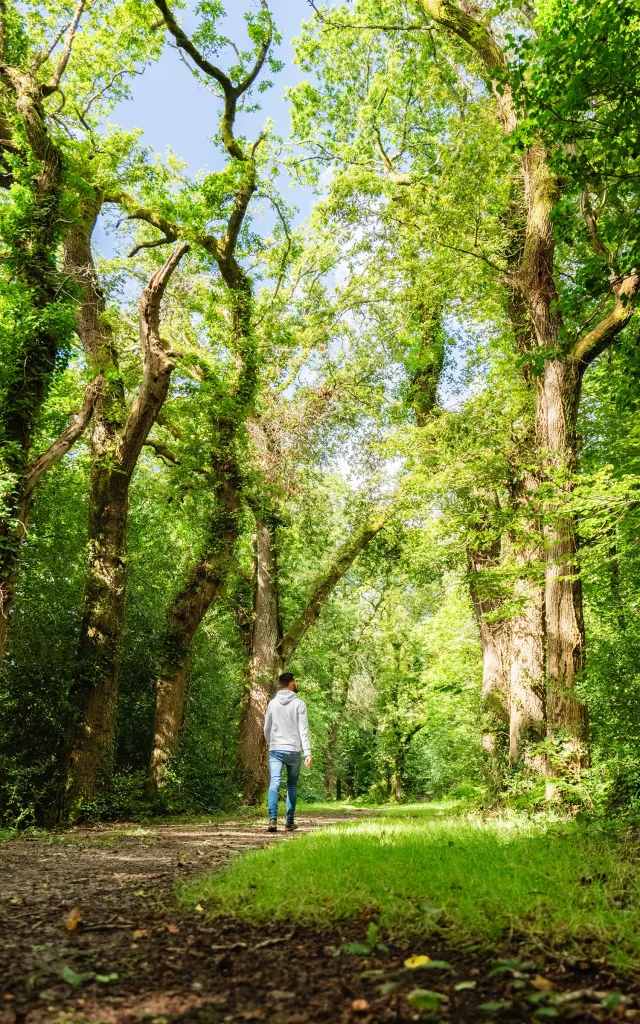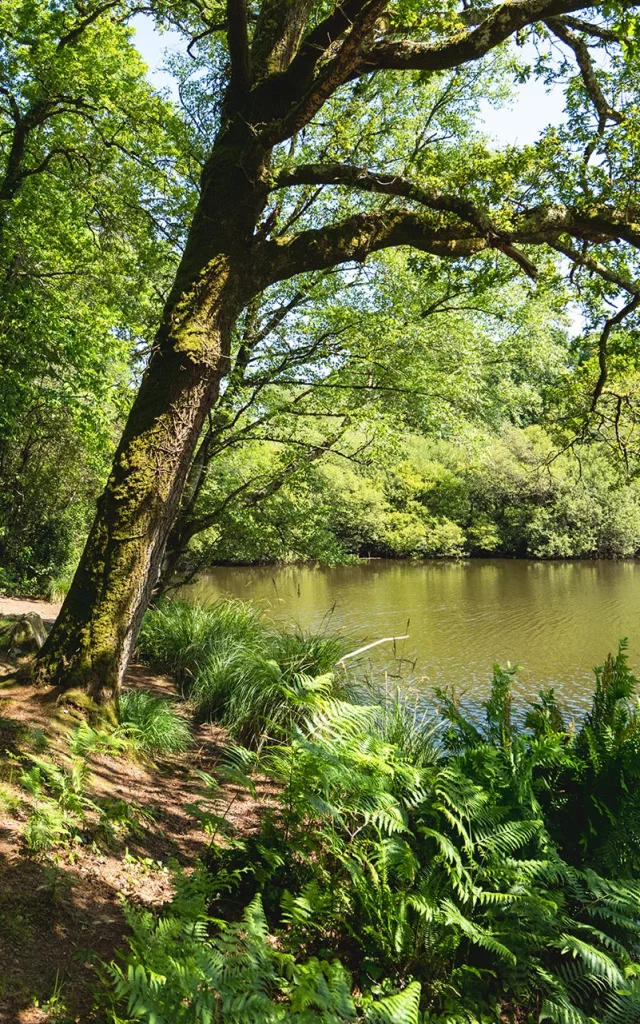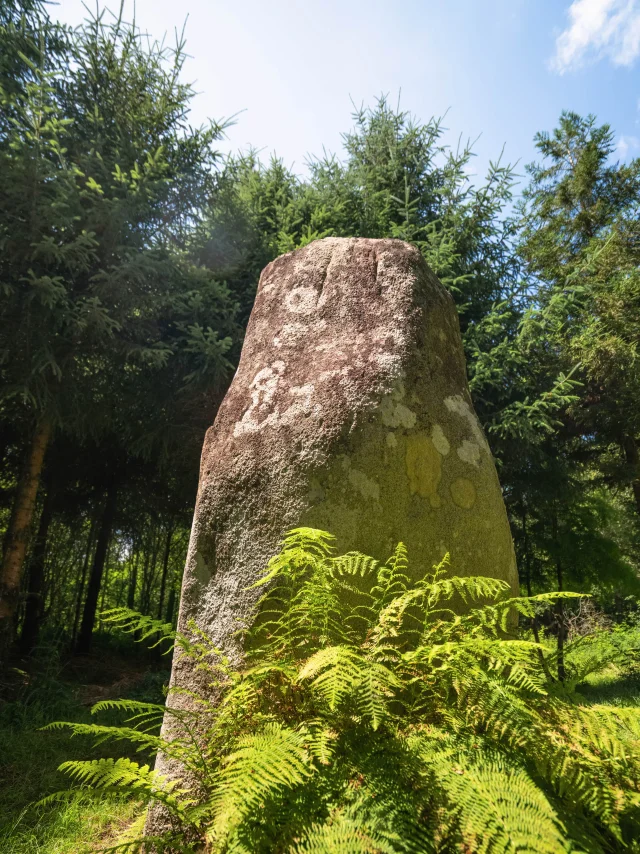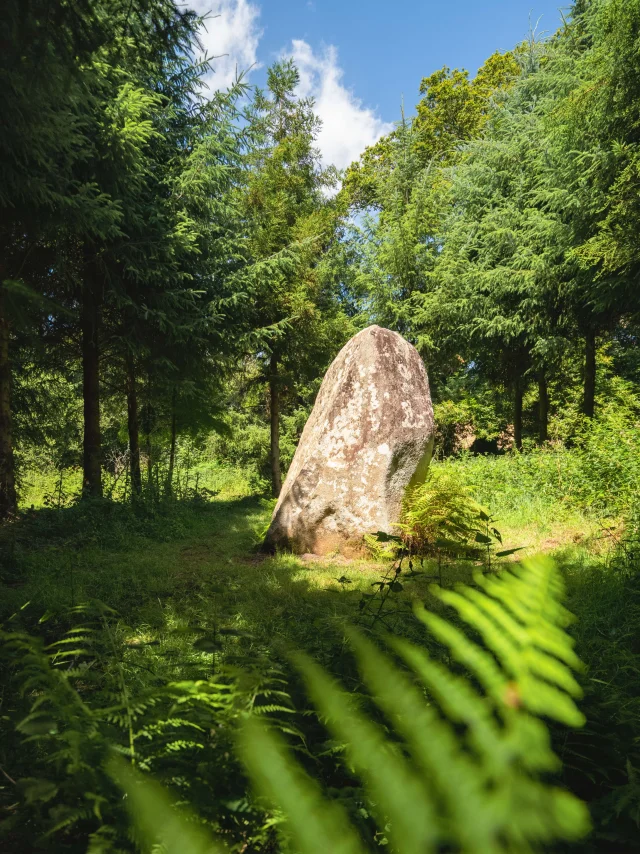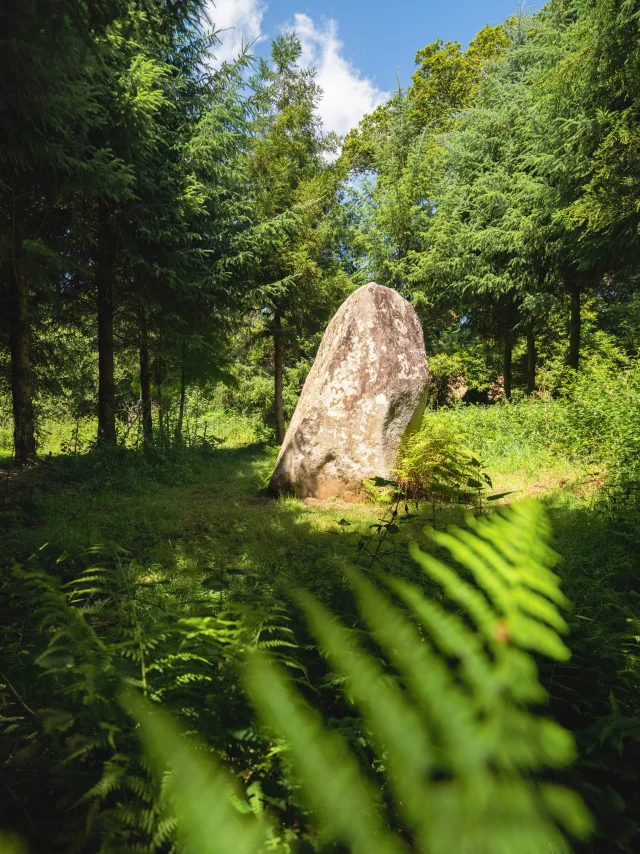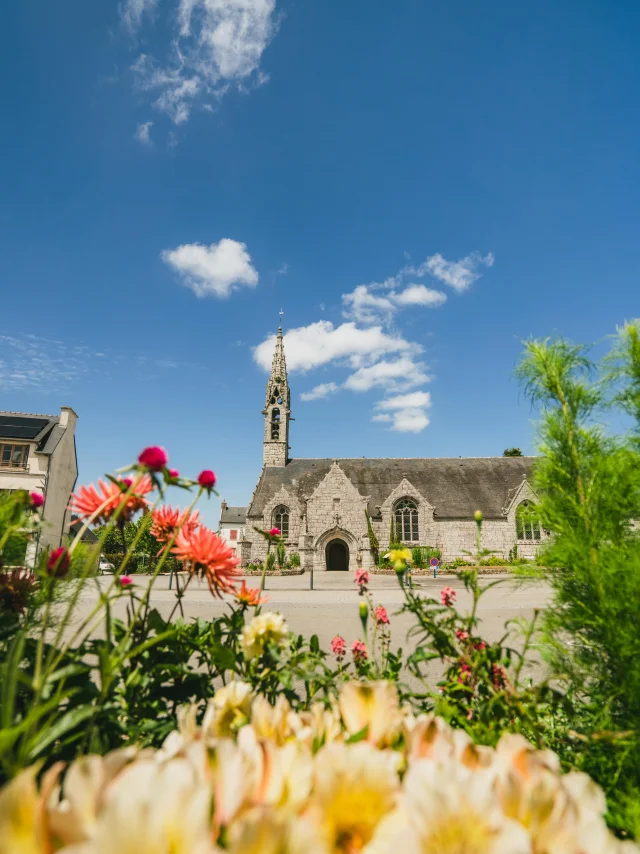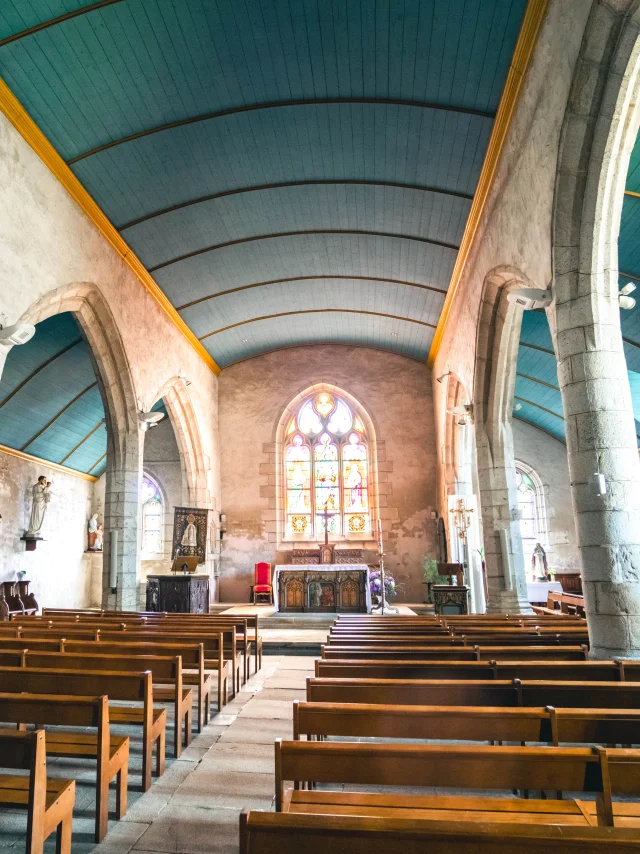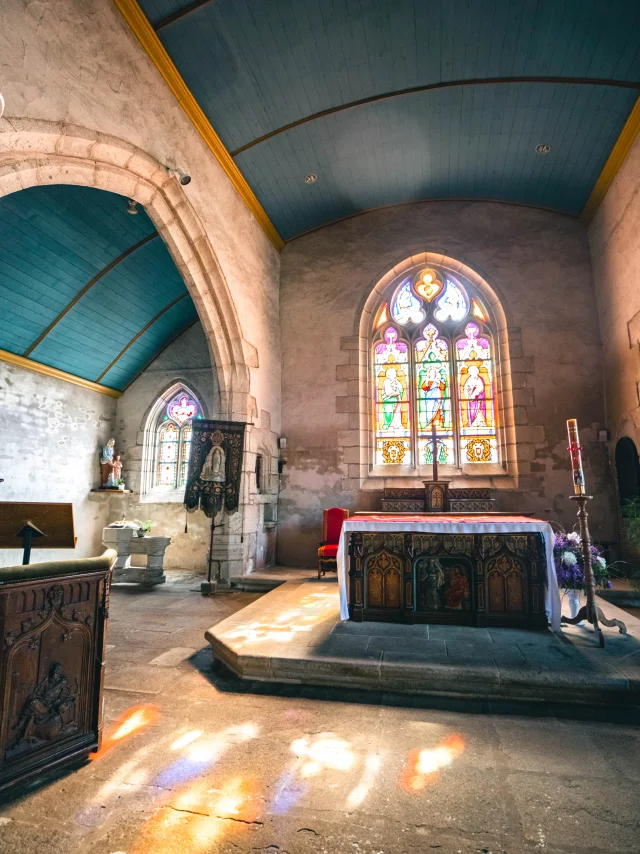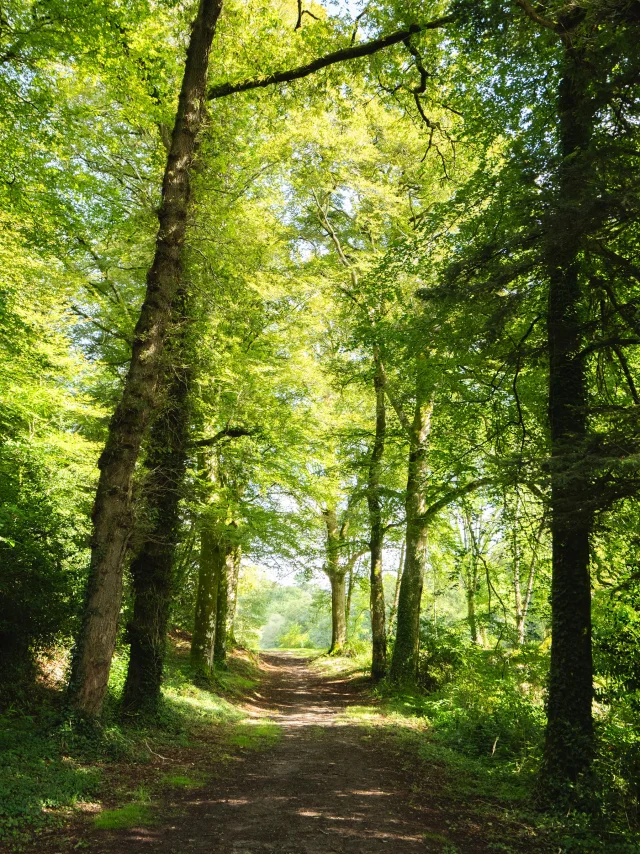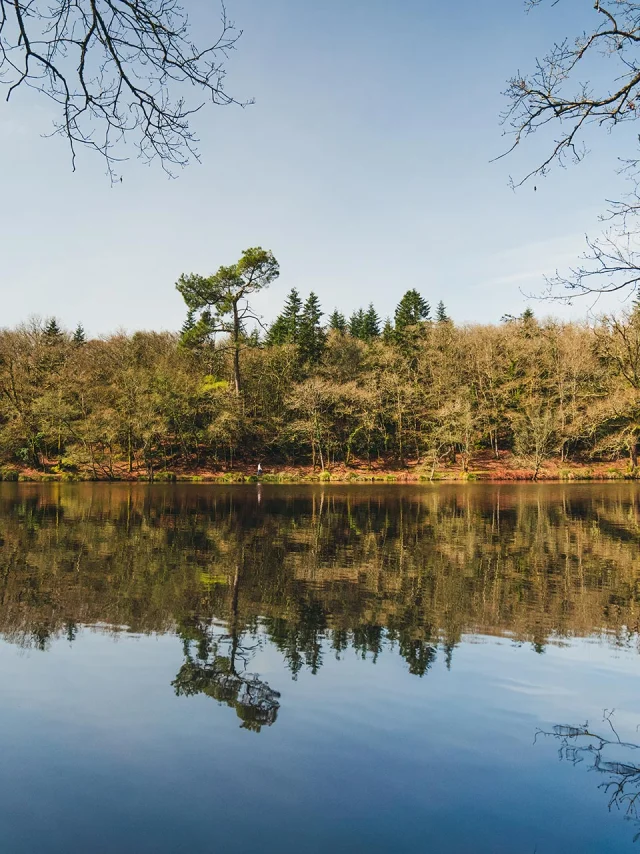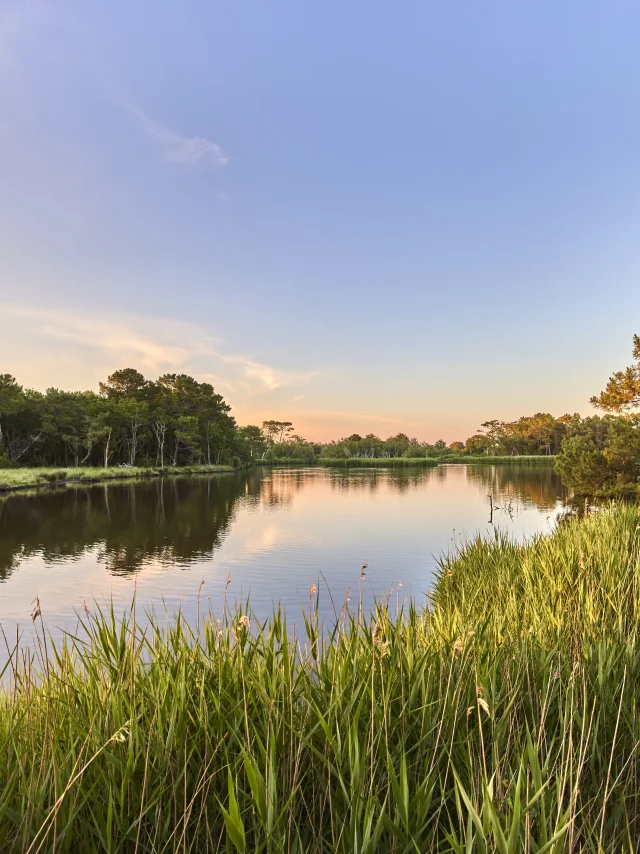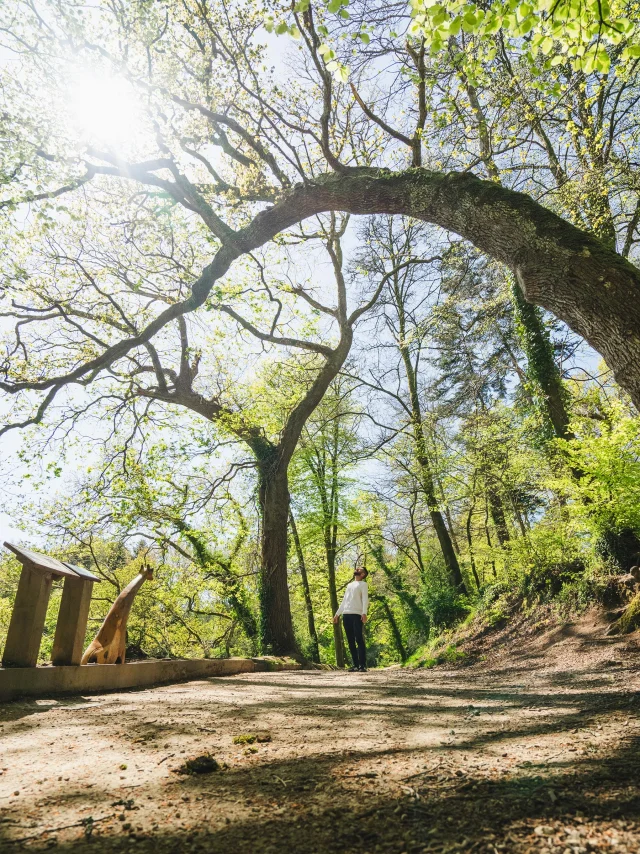The Kerhuel menhir
A stone giant in the heart of the Breton countryside
Did you know that the word menhir comes from the Breton men (stone) and hir (long)? These great blocks of stone, raised by man several thousand years ago, continue to fascinate young and old alike. In Saint-Évarzec, the Kerhuel Menhir is a fine example: a colossus 2.85 metres high and 5.28 metres in circumference, still firmly rooted in the landscape!
We still don’t know for certain what their function was, but menhirs were often used as territorial markers, funerary symbols or ritual supports. The Kerhuel menhir, erected at a time when these monumental stones marked out Brittany, is one of the last intact witnesses to this remote era.
In the 6th century, the arrival of Christianity attempted to erase these traces, deemed pagan. But the Bretons resisted, allowing certain menhirs, like this one, to survive the centuries.
The name of the site, Kerhuel, comes from the Breton ker (farm) and huel (high): here we find ourselves on an ancient “high farm”. And there’s more to the site than just this one menhir! Archaeological digs carried out nearby have uncovered a circular tomb measuring 6 metres in diameter, as well as a second, smaller monument. These two tombs were moved and can now be seen at Saint-Guenolé, in the commune of Penmarc’h.
In spring, the site is decked out in a thousand colours as wild irises and purple foxgloves bloom. It’s a magnificent natural backdrop for a family walk, punctuated by stories from another time.
Even today, the Kerhuel Menhir continues to fascinate. It provides a tangible link with prehistoric Brittany, and invites everyone to imagine the lives of those who built it. It’s an ideal place to arouse children’s curiosity while enjoying a moment in the fresh air.

